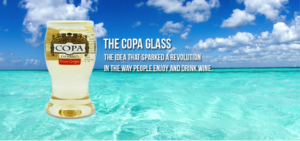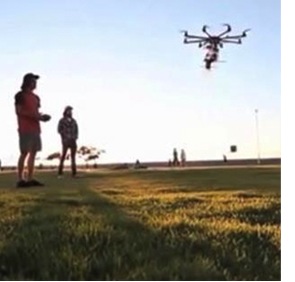The Grammys have brought us some of the best moments in television, and the most spectacular performances in music. From Michael Jackson’s moonwalk across the stage in ’88 to the Elton John and Eminem duet in ’01, and most recently Lady Gaga’s tribute to David Bowie, the Grammys have been the place for historical moments in music. And if you’re like me, you brim with excitement before the show, and are unable to stop rehashing the night’s best moments for days after. One night a year, the telecast captivates people around the world and easily dominates the conversation on social. However, is the show on your mind for other 364 days? Well, I spoke with Evan Greene, a friend of mine and CMO of the Recording Academy, to hear how his team approaches the challenge of marketing a show that airs one night per year. Key words here: social, social, and more social.
Drew: What does your marketing purview include?
Evan: I can tell you that anything that touches the Grammy brand ultimately runs through the marketing area, whether it’s marketing and brand strategy, PR, social media, digital content and yes, partner strategy. We represent the biggest brand in music, and for other brands, there is value in aligning with us. We partnered with other brands to utilize the impact and the marketing reach of brands that are complementary to our own. Also, we are a 501(C) 6, a not-for-profit trade organization, and this affects our marketing strategy.
Drew: How does it affect your marketing partnerships, specifically?
Evan: We put together marketing partnerships so that we can leverage the impact of the Grammys, which is unparalleled in terms of credibility and prestige. On the flipside, the value that partners bring to the table opens up other marketing channels. Now, because of the prestige of our brand, there is a value associated which means there still needs to be an economic model in place.
Drew: Was there partner integration for Lady Gaga’s performance? Did Intel do the projection?
Evan: Yes. This was the first time when we partnered with a company to actually help us enhance the performance. If you notice, there was no Intel visibility or attribution on the telecast because we wanted it to be subtle. We focused on making the performance memorable, something that people would be talking about for a long time. At the end of the day, Intel received a tremendous amount of credit and earned media.
Drew: And with that comes months of hard work and constant communication between Intel and the Grammys.
Evan: Yes, there was a lot of heavy lifting and coordination. We put something together that had never been done before. There were things that happened on the Grammy stage from a technology standpoint that have never been put on television. It really was the next generation of Grammy moments, right before our eyes.
Drew: Every year, you challenge your agency to do some new things. Let’s talk about the new things that you did this year in terms of marketing and social.
Evan: This year we started thinking about the inspirational power of music and the intersection between music and sports. Sports came in because it was SuperBowl 50 and it ran on CBS, eight days prior to the Grammy Awards, which created an extraordinary opportunity to bring the two together. We engaged our agency of record, Chiat/Day, which in my opinion is one of the best shops on the planet.
Drew: How was the concept further developed?
Evan: We started from the standpoint of how do we celebrate sports and music. How do we align the best in music with the best in sports, globally? What came out of that was a powerful tagline, called “Witness Greatness.” We looked at the music that inspires the athletes who in turn inspire the world. “Witness Greatness” really is about the inspirational power of music, and we could apply that in a number of ways.
Drew: So you were able to move beyond just the “Witness Greatness” tagline?
Evan: Yes, it was not only the theme and tagline, but also the visual representation and how we applied it. We then applied the theme to social and made sure that any visual we associated with represented greatness. We made sure to elevate that conversation whenever and wherever possible.
Drew: How did your team focus on the witness portion of “Witness Greatness”?
Evan: We have a companion stream, sort of a shoulder programming experience called “Grammy Live.” It shows different angles and elements, not necessarily the telecast itself, but it shows backstage etc. This year, we inserted a camera inside the base of the Grammy statute so that we could actually witness greatness in a different way-from the position in the POV of the statue itself. We got some great footage and content that had never been captured before.
Drew: After the Grammy team fully adopts the theme, I’m guessing the next step is for the media to pick it up?
Evan: Yes, and was amazing when the media starts quoting our taglines, and when other members of our social ecosystem started organically using the “Witness Greatness” hashtag. When I think about all the touch points, from those doing social to the persons pitching media stories, to our marketing partners, there is a consistent look and feel across the board.
Drew: Any favorite projects from the “Witness Greatness” theme?
Evan: There were a couple of components that I found particularly exciting. If you go on our YouTube page, youtube.com/thegrammys, there is a video that we did with Kendrick Lamar in his hometown of Compton. We went on the street, and asked people to sing a couple of lines from his song Alright, which has become sort of an anthem over the past year. We created a video of all of these individuals singing particular lines of the song, and at the end, it culminated with an impromptu performance and the tagline was “Greatness Comes From Everywhere.” This served as a drive to the Grammys.
Drew: I know the Grammys has worked with user-generated content in the past. Can you give an example of how you used UGC in past seasons?
Evan: Several years ago, we had a campaign called “We’re All Fans,” and it underscored the idea that what makes an artist great are the fans. With that in mind, we invited fans to upload videos of themselves and become part of the campaign. That was probably the most organic example that we had. People actually got to see themselves as part of the national Grammy campaigns, creating mosaics of Lady Gaga and other global superstar artists.
Drew: How was UGC executed for this Grammy season?
Evan: The idea really drives the execution. This year, our campaign was about creating the conversation, engaging with fans and having them share what about their favorite artists represents ‘Greatness.’ So in terms of UGC, we didn’t invite video submissions this time around, but we focused on having respectful dialog with our fans and followers about inspiration and greatness.
Drew: The reviews have been very successful on social. Obviously, you’re at the center of the social media conversation during the show, but you’re still very present months after it aired. How is that even possible?
Evan: I think we’ve been very successful and I am happy with the work of our social team and everybody involved in that effort. I think we can get better, I really do. The core reason for this year-round success is respecting fans and speaking with trust and authenticity.
Drew: What are some of the mistakes you are seeing other organizations make with their social media?
Evan: When communication seems gratuitous, and it is focused purely on making a sale or driving behavior, consumers see right through that. We simply want to be a credible part of the music conversation. When you look at the brands that resonate and break through, it’s the ones that earn your trust. If you speak with authenticity, and you respect your audience, then that becomes the cornerstone of trust. Trust is how you build a long-term relationship.
Drew: Being a nonprofit, how do you allocate the money brought in from the Grammys?
Evan: The money that we make doesn’t go to pay dividends, meet a quota or achieve net profit goals. It’s filtered right back into the music industry so we can create more in-school music programs and empower the next generation of music makers. We give back in a variety of different ways to enhance and srengthen the industry platform that the Recording Academy sits on.
Drew: One of the other things that you’ve done over the years is expand the Grammys from Grammy night to Grammy week. I feel like this was Grammy month. Where are you right now in terms of the scale of the Grammys?
Evan: I think we’ve made a considerable amount of progress over the years, but we still have a ways to go. What has struck me is that we’ve built this massive brand with a tremendous amount of impact by virtue of a single television event held for three-and-a-half hours, one night per year. The marketing opportunity that creates is enormous. If we take a proactive brand management approach, how impactful and powerful a brand could we be if we continue to extend throughout the year?
Drew: What a challenge! How do you rate progress?
Evan: I think we have expanded the impact of the Grammy as a brand, beyond simply one night per year. I do not believe that we are anywhere close to being there yet where people started thinking about the Grammys as a relevant brand they need to interact with in June, July, and August. But like I said, we’re making progress and there are a number of exciting things on the horizon.





